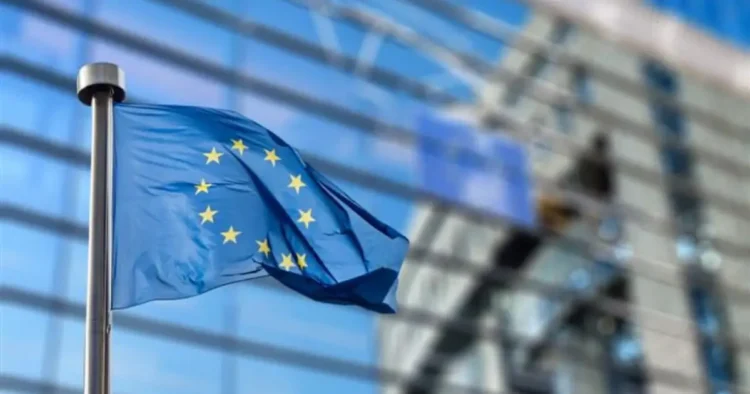On Friday, the European Union (EU) announced it is providing 1.5 billion euros (approximately USD 1.6 billion) to support Ukraine. This funding is the first part of a larger sum generated from profits on frozen Russian assets.
Back in May, the EU’s 27 member states agreed to use the interest earned on around 210 billion euros (USD 225 billion) of Russian central bank assets for military support and rebuilding efforts in Ukraine. Most of these assets are held in Belgium and were frozen as part of sanctions imposed after Russia’s full-scale invasion of Ukraine. Brussels estimates that the interest on these assets could yield about 3 billion euros each year.
European Commission President Ursula von der Leyen emphasized the EU’s solidarity with Ukraine, stating, “The EU stands with Ukraine. Today we transfer 1.5 billion euros in proceeds from immobilized Russian assets to the defence and reconstruction of Ukraine. There is no better symbol or use for the Kremlin’s money than to make Ukraine and all of Europe a safer place to live.”
Response to Recent Russian Advances
This move comes shortly after Moscow announced it had recaptured two villages in Eastern Ukraine. Recent advances by Russian forces in eastern and northeastern Ukraine have caused concern in Kyiv. Ukrainian leaders are worried that without financial support, Russia might continue to gain ground.
EU headquarters explained that 90 percent of the 1.5 billion euros would go into a special fund called the European Peace Facility. Many EU countries already use this fund to get reimbursed for arms and ammunition they send to Ukraine. The remaining 10 percent will be added to the EU budget.
ALSO READ: “Hungary Blocks EU Compensation Until Ukraine Allows Russian Oil Transit”
This portion of the funds will help bolster Ukraine’s defence industry or assist with reconstruction. The allocation ensures that even if some countries object to their share being used for military purposes, the money can still support Ukraine’s needs.
This financial support from the EU demonstrates a strong commitment to aiding Ukraine in its fight against Russian aggression. By using the interest earned on frozen Russian assets, the EU not only supports Ukraine’s immediate military needs but also invests in its long-term reconstruction and stability.

















Comments